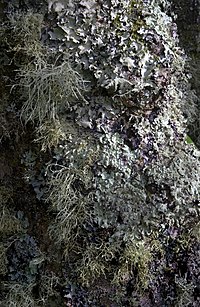
Photo from wikipedia
Colletotrichum siamense and Colletotrichum australisinense cause Colletotrichum leaf disease that differ in their symptoms in rubber tree (Hevea brasiliensis), and pathogenicity of these two fungal species is also not identical… Click to show full abstract
Colletotrichum siamense and Colletotrichum australisinense cause Colletotrichum leaf disease that differ in their symptoms in rubber tree (Hevea brasiliensis), and pathogenicity of these two fungal species is also not identical on different cultivars of rubber tree. This divergence is often attributed to pathogen virulence factors, namely carbohydrate-active enzymes (CAZymes), secondary metabolites (SM), and small-secreted protein (SSP) effectors. The draft genome assembly and functional annotation of potential pathogenicity genes of both species obtained here provide an important and timely genomic resource for better understanding the biology and lifestyle of Colletotrichum spp. This should pave the way for designing more efficient disease control strategies in plantations of rubber tree. In this study, the genes associated with these categories were manually annotated in the genomes of C. australisinense GX1655 and C. siamense HBCG01. Comparative genomic analyses were performed to address the evolutionary relationships among these gene families in the two species. First, the size of genome assembly, number of predicted genes, and some of the functional categories differed significantly between the two congeners. Second, from the comparative genomic analyses, we identified some specific genes, certain higher abundance of gene families associated with CAZymes, CYP450, and SM in the genome of C. siamense, and Nep1-like proteins (NLP) in the genome of C. australisinense.
Journal Title: Frontiers in Microbiology
Year Published: 2020
Link to full text (if available)
Share on Social Media: Sign Up to like & get
recommendations!